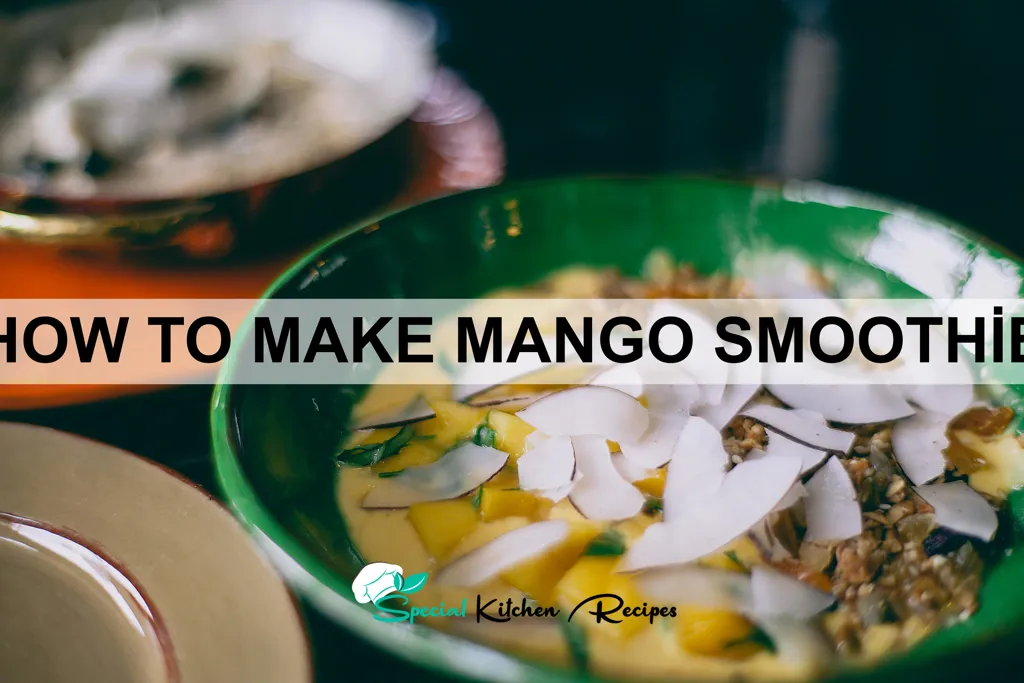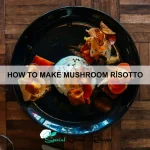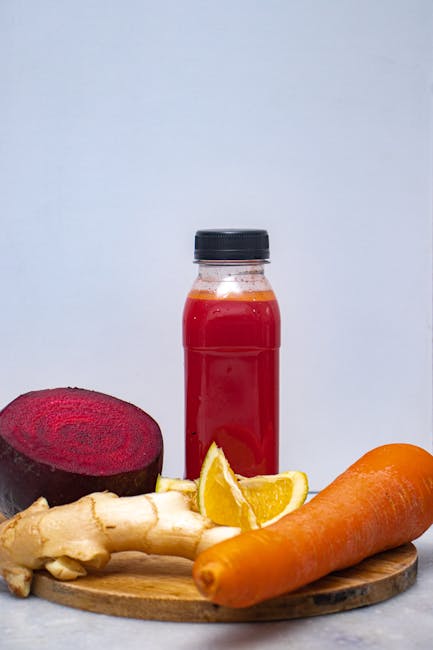The vibrant, tropical delight that is the mango smoothie boasts a history as rich and complex as its flavor profile. While pinpointing the exact origin of blending mangoes into a refreshing beverage is difficult, its popularity undeniably stems from the fruit’s own ancient history. Mangoes themselves originated in South Asia, with evidence suggesting cultivation dating back over 4,000 years. Ancient texts from India and Southeast Asia frequently mention mangoes, highlighting their importance in religious ceremonies, royal courts, and everyday life. The fruit quickly spread along trade routes, eventually becoming a beloved staple across continents.
The evolution of the mango smoothie itself is likely a gradual process, influenced by the increasing availability of blending technology and the global trend towards convenient, healthy, and delicious drinks. While a precise date of its inception is elusive, the rise of the smoothie as a popular beverage in the mid-20th century certainly facilitated the mango smoothie’s ascension. The simplicity of blending frozen mango with other ingredients like yogurt, milk, or juice made it a quick and appealing option for a refreshing treat.
Today, the mango smoothie enjoys widespread popularity, reflecting the mango’s global appeal. Globally, India is the largest producer of mangoes, accounting for over half of the world’s total production, according to the Food and Agriculture Organization of the United Nations. This abundance contributes to the accessibility of mangoes and, consequently, the popularity of mango smoothies worldwide. Mangoes are not just a delicious fruit; they are a significant part of many cultures, featuring prominently in desserts, savory dishes, and even religious rituals. The mango smoothie, therefore, represents more than just a beverage; it’s a modern interpretation of a fruit with a long and storied past, a testament to its enduring cultural significance and global appeal.
Beyond its cultural significance, the mango smoothie also offers a nutritional powerhouse. Mangoes are an excellent source of Vitamin C, Vitamin A, and fiber, contributing to overall health and well-being. This readily accessible and delicious drink provides a convenient way to incorporate these vital nutrients into a daily diet. This recipe will guide you through creating your own perfect mango smoothie, allowing you to experience the deliciousness and rich history of this beloved beverage firsthand.
Ingredients and Measurements
Crafting the perfect mango smoothie hinges on the precise balance of ingredients. Here’s a detailed breakdown of what you’ll need, along with recommendations for achieving optimal flavor and texture.
Mango: The star of the show! We recommend using about 1 large ripe mango (approximately 1 ½ cups diced). Ripe mangoes are crucial for sweetness and a smooth, creamy texture. Look for mangoes that are slightly soft to the touch and yield gently to pressure. Avoid mangoes that are overly hard or have bruises, as these can impact the flavor and texture of your smoothie. If using frozen mango, you can reduce the amount of ice needed, or even omit it entirely.
Liquid: The liquid component is key to achieving the desired consistency. We suggest using ¾ cup of your preferred liquid. This could be water, milk (dairy or non-dairy like almond or soy milk), coconut water for added electrolytes, or even orange juice for a tangier twist. Experiment with different liquids to find your favorite combination! Using less liquid will result in a thicker smoothie, while more liquid will make it thinner.
Sweetener (Optional): The sweetness of mangoes varies depending on ripeness and variety. If your mangoes aren’t particularly sweet, you may want to add a sweetener. Start with 1-2 tablespoons of honey, maple syrup, or agave nectar and adjust to your taste. Remember that many sweeteners add moisture, so you might need to adjust your liquid accordingly.
Yogurt (Optional): For extra creaminess and a boost of probiotics, consider adding ½ cup of plain Greek yogurt or your favorite yogurt alternative. This will also add a subtle tang that complements the mango beautifully. Note: Adding yogurt will increase the thickness of your smoothie.
Ice: To achieve the perfect chilled smoothie, add ½ cup of ice cubes. If using frozen mango, you may need less ice or none at all. If you prefer a thicker smoothie, add more ice. Start with the recommended amount and adjust as needed to reach your preferred consistency.
Other additions (Optional): Feel free to personalize your smoothie! A pinch of ground ginger can add warmth, a squeeze of lime juice provides a zing, or a handful of fresh spinach offers a nutritional boost. Remember to adjust the liquid quantity if adding additional ingredients.
Important Note: All measurements are approximate. Adjust the ingredients to your liking and preferences. The beauty of smoothies is their adaptability!
Preparation of Mango (Washing, Peeling, Chopping)
Before you begin blending your delicious mango smoothie, proper preparation of the mango is crucial for both flavor and safety. We’ll be working with approximately two medium-sized mangoes (about 1 pound total) for this recipe, but you can adjust the quantity to your liking.
First, thoroughly wash the mangoes under cold running water. Scrub the skin gently with your fingers or a soft vegetable brush to remove any dirt, pesticides, or debris that may be present. Pay close attention to the stem and blossom ends, as these areas can sometimes accumulate more residue. Take your time with this step; clean mangoes are essential for a safe and tasty smoothie.
Next, we’ll peel the mangoes. Several methods exist; the easiest is using a sharp paring knife. Hold the mango firmly and carefully peel away the skin in long strips, following the natural curve of the fruit. Alternatively, you can use a vegetable peeler, but be cautious to avoid removing too much of the edible flesh. A dull blade will make this process more difficult and increase the risk of injury.
Once peeled, we need to chop the mangoes into manageable pieces for blending. The size of the pieces isn’t overly critical, but aim for chunks roughly 1-inch square. Smaller pieces will blend more easily and create a smoother consistency, while larger pieces might require a more powerful blender or multiple blending cycles. If you prefer a chunkier smoothie, feel free to use slightly larger pieces.
Remove any large seeds or fibrous parts from the mango flesh. While some people include these in their smoothies, they can create a slightly stringy texture. For a smoother, more refined smoothie, it’s recommended to remove them. You can easily do this with your knife or a spoon.
Finally, once the mangoes are chopped, you can proceed to the next step of the smoothie recipe. It’s recommended to prepare all ingredients before you start blending to ensure a smooth and efficient process. Remember to always wash your hands and your tools thoroughly before and after handling the mangoes.
Blending Instructions
Once you’ve prepared all your ingredients (see the Preparation section), it’s time to blend your delicious mango smoothie! This process is straightforward, but following these instructions will ensure a perfectly smooth and creamy result.
Begin by adding the frozen mango chunks (approximately 2 cups, or about 2 large ripe mangoes) to your blender. Frozen mango is crucial for achieving the desired icy texture; if using fresh mango, add a few ice cubes to compensate. The quantity of mango can be adjusted to your preference – more for a richer mango flavor, less for a lighter smoothie.
Next, add your liquid base. We recommend using 1 cup of unsweetened almond milk for a lighter smoothie, or 1 cup of plain yogurt for a creamier, thicker consistency. Experiment with different liquids like coconut milk, orange juice, or even a combination for varying flavors and textures. The amount of liquid can also be adjusted; start with the recommended amount and add more if needed to achieve your preferred consistency.
Now, incorporate the remaining ingredients. Add 1/4 cup of plain Greek yogurt for extra creaminess and protein (optional). A tablespoon of honey or maple syrup (or to taste) will add sweetness if your mangoes aren’t perfectly ripe. A squeeze of fresh lime juice (about 1/2 a lime) will brighten up the flavor and enhance the overall taste. Remember to add sweeteners gradually, tasting as you go, to avoid making it too sweet.
Secure the blender lid tightly and begin blending on a low speed. This helps prevent splashing and ensures all ingredients are incorporated evenly. Gradually increase the speed to high and blend for approximately 1-2 minutes, or until the smoothie is completely smooth and creamy. Scrape down the sides of the blender with a spatula halfway through if needed to ensure everything is thoroughly blended.
Once blended, taste the smoothie and adjust the sweetness or tartness as needed. If it’s too thick, add a little more liquid; if it’s too thin, add a few more frozen mango chunks and blend briefly again. For a truly luxurious smoothie, consider adding a pinch of sea salt to enhance the sweetness of the mango.
Finally, pour your delicious mango smoothie into a glass, garnish with a fresh mango slice or a sprig of mint (optional), and enjoy immediately!
Adjusting Sweetness and Consistency
Achieving the perfect balance of sweetness and consistency in your mango smoothie is key to a truly delightful experience. This section will guide you through adjusting these aspects to your personal preference.
Sweetness Control: Mangoes themselves vary in sweetness depending on ripeness and variety. If your smoothie is not sweet enough, you have several options. Start by adding a touch of honey or maple syrup. Begin with 1 tablespoon and taste; add more incrementally until you reach your desired sweetness. Avoid adding too much sweetener at once, as it can be difficult to correct an overly sweet smoothie. A good rule of thumb is to add sweetener in small quantities, tasting after each addition. Alternatively, if you prefer a less processed sweetener, a ripe banana added to the blend can significantly boost the sweetness and creaminess.
For a naturally sweeter smoothie: Choose very ripe mangoes. Their intense sweetness will reduce or eliminate the need for additional sweeteners. Look for mangoes that yield slightly to gentle pressure and have a fragrant aroma. Overripe mangoes, while sweeter, can sometimes result in a slightly fermented taste, so use your judgment.
Consistency Adjustments: The consistency of your smoothie depends on the ratio of liquid to solids. If your smoothie is too thick, add more liquid gradually. Start with 1/4 cup of your chosen liquid – this could be water, milk (dairy or non-dairy), or even mango juice for a more intense mango flavor. Blend again thoroughly after each addition to ensure even consistency. For a thicker smoothie, reduce the amount of liquid or add a frozen ingredient like a few ice cubes or frozen mango chunks.
For a creamier texture: Incorporating ingredients like yogurt (Greek yogurt works exceptionally well), coconut cream, or avocado will add creaminess and richness. Add 1/4 cup at a time and blend until smooth. Be mindful of the flavor profiles these ingredients add and adjust accordingly. For example, coconut cream will impart a distinct coconut flavor, so consider this when choosing your other ingredients.
Troubleshooting: If your smoothie is still too thick even after adding liquid, ensure your blender is powerful enough and that all ingredients are properly incorporated. If it’s still grainy, try straining the smoothie through a fine-mesh sieve to remove any fibrous bits. Remember, practice makes perfect! Experiment with different ratios and ingredients to find your ideal mango smoothie recipe.
Serving Suggestions
Your delicious mango smoothie is ready! Now, let’s explore some delightful ways to serve it and elevate your enjoyment. The possibilities are endless, depending on your preference and the occasion.
For a classic experience: Simply pour your smoothie into a tall glass. Fill the glass about ¾ full to leave room for a garnish. A simple straw and a wedge of fresh mango make for a beautiful and refreshing presentation. For a 16oz glass, this would be approximately 12 ounces of smoothie.
Add a touch of flair: Consider using chilled glasses for an extra-cool sensation. Experiment with different types of glasses: mason jars offer a rustic charm, while elegant wine glasses provide a sophisticated touch. A small amount of whipped coconut cream (about 1-2 tablespoons) swirled on top adds a luxurious texture and visual appeal.
Elevate with garnishes: A sprinkle of chopped fresh mint or basil provides a burst of aromatic freshness, complementing the sweetness of the mango. A few slivers of toasted coconut flakes add a delightful crunch. For a tropical twist, consider a small piece of candied ginger or a thin lime wedge. Remember to keep garnishes proportionate to the size of your serving.
Serving sizes: A standard serving size for a mango smoothie is around 8-10 ounces. However, you can easily adjust this based on your needs and appetite. If making smoothies for children, smaller servings in smaller glasses are recommended. For larger servings, consider using a 16-ounce glass and adjusting the recipe proportionally to maintain the desired consistency and flavor balance.
Accompaniments: Mango smoothies pair wonderfully with a variety of breakfast or snack items. A small bowl of granola adds a satisfying crunch and extra fiber. A side of whole-wheat toast with a little nut butter provides a balanced meal. Consider the overall nutritional balance when pairing your smoothie with other foods. For a lighter option, serve with fresh fruit salad.
Temperature variations: While best served chilled, you can also enjoy your mango smoothie slightly warmer, especially on cooler days. Simply let it sit at room temperature for a short time before serving. Avoid leaving it at room temperature for extended periods to prevent spoilage.
Creative variations: Get creative! Serve your smoothie in a frozen popsicle mold for a refreshing treat on a hot day. You can even layer different flavored smoothies in the mold for a visually stunning and delicious popsicle. Remember to adjust the recipe’s sweetness depending on the desired level of frozen solidness.
Tips for Best Flavor and Texture
Achieving the perfect mango smoothie requires attention to detail beyond just blending the ingredients. The flavor and texture can be dramatically improved with a few simple techniques. Start with ripe, but not overripe, mangoes. Overripe mangoes can be too mushy, leading to a less desirable texture. Aim for mangoes that yield slightly to gentle pressure but aren’t bruised or soft to the touch.
Consider the type of mango. Different mango varieties offer unique flavor profiles. Ataulfo mangoes, for example, are known for their sweeter, more aromatic flavor, while Tommy Atkins mangoes are slightly more tart. Experiment to find your preferred flavor.
Don’t skimp on the liquid. The amount of liquid you use directly impacts the smoothie’s consistency. For a creamy, thicker smoothie, start with approximately 1/2 cup of liquid (milk, yogurt, or juice) per one cup of chopped mango. For a thinner, more refreshing smoothie, increase the liquid to 3/4 cup or even 1 cup. You can always add more liquid later, but it’s harder to thicken a thin smoothie.
Balance sweetness and tartness. Pure mango can be quite sweet. To balance this, consider adding a touch of acidity. A squeeze of lime or lemon juice (about 1/2 to 1 tablespoon) can brighten the flavor and prevent the smoothie from being overly cloying. A small amount of plain yogurt (2-3 tablespoons) can also add a subtle tartness and creaminess.
Enhance the flavor profile. Experiment with complementary ingredients to elevate your smoothie’s taste. A dash of vanilla extract (1/2 teaspoon) adds warmth and richness. A pinch of ginger or a few mint leaves can provide a refreshing twist. A sprinkle of cinnamon can add a touch of spice. Remember to start with small amounts and adjust to your preference.
Blend in stages. For a smoother texture, add the mango and liquid first and blend until completely smooth before adding other ingredients. This prevents large chunks of fruit or ice from getting stuck in the blades. If using frozen mango, let it sit at room temperature for 10-15 minutes before blending to make it easier to process. Ice should be added last for the best consistency. Start with 1/2 cup of ice and add more as needed.
Taste and adjust. Once blended, taste your smoothie and adjust the sweetness, tartness, or other flavor components as needed. A little extra honey, agave nectar, or maple syrup can add sweetness if required. Remember that flavors can intensify as the smoothie sits, so taste it before serving and make adjustments accordingly.
Recommendations
For the best tasting mango smoothie, we recommend using ripe, but firm mangoes. Overripe mangoes can result in a less desirable texture. Experiment with different mango varieties for unique flavor profiles; Ataulfo mangoes, for example, offer a sweeter and creamier texture compared to Tommy Atkins.
To enhance the smoothie’s nutritional value, consider adding ingredients like spinach or kale for a boost of vitamins and minerals. A squeeze of lime juice adds a refreshing zing and helps to balance the sweetness. Avoid over-blending, as this can create a watery consistency. A few seconds of pulsing after all ingredients are combined is often sufficient for a smooth, but not overly processed, texture.
Serving Suggestions: This smoothie is perfect as a quick breakfast, a refreshing midday snack, or a post-workout treat. Garnish with a few slices of fresh mango, a sprig of mint, or a sprinkle of chia seeds for added visual appeal and texture. It’s also delicious served slightly chilled or frozen for a thicker consistency akin to a mango sorbet.
Storage: Store leftover smoothie in an airtight container in the refrigerator for up to 24 hours. Do not refreeze a thawed smoothie. The texture and flavor may be negatively impacted.
Complementary Dishes: This mango smoothie pairs beautifully with light and savory breakfast options like whole-wheat toast with avocado or a small bowl of granola. For a sweeter pairing, consider serving it alongside a coconut yogurt parfait. It also complements lighter lunch options such as a salad with grilled chicken or fish.
Nutritional Information (approximate per serving, based on a standard recipe): Calorie count will vary depending on ingredients and portion size, but a typical serving may contain approximately 200-250 calories. It’s a good source of Vitamin C, Vitamin A, and fiber. Please note: This is an estimate, and the exact nutritional content will depend on the specific ingredients used and their quantities.





